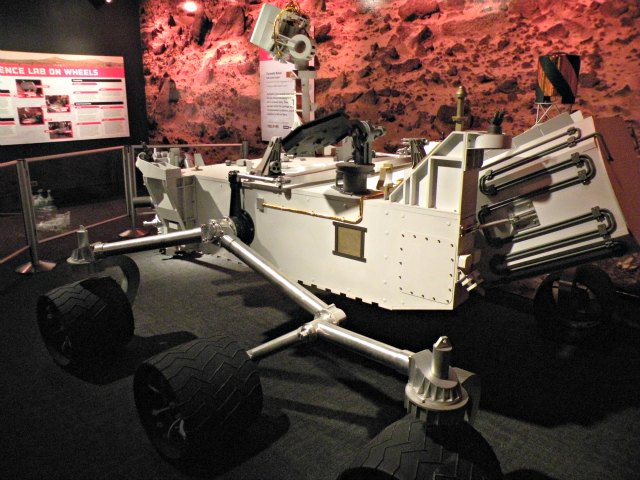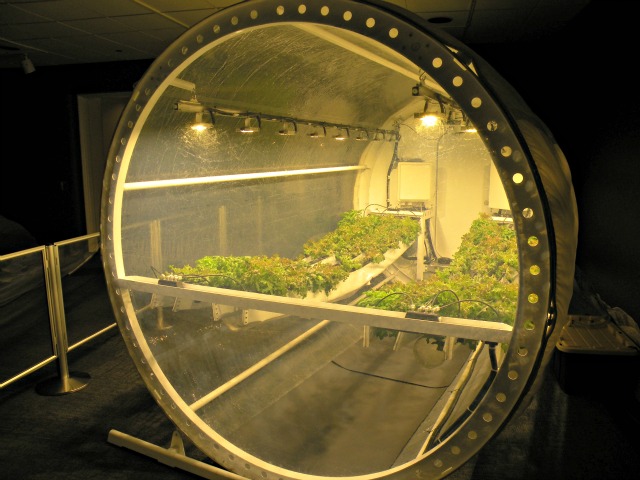Museum Of Science And Industry Exhibit Looks At The Future Of Lunar, Mars Expeditions
By Chuck Sudo in News on Aug 15, 2012 5:20PM

Dusty the Rover. (Chuck Sudo/Chicagoist)
As the latest Mars Rover Expedition continues to score another point for Science, an exhibit at the Museum of Science and Industry shows what could be in the works for future lunar or interplanetary exploration.
Life In Space? takes a look at the advancements in technology and the research behind the current Mars mission and looks at the possibility of cultivating plant life on the moon if NASA ever manages to renew lunar exploration. Part of the exhibit features a full-scale model of the Curiosity Rover named Dusty that will be on display in MSI’s Lower Court east gallery through Sept. 30. MSI is one of two institutions in the world selected by NASA to host a full-scale model of the rover during the landing. The rover is surrounded by videos and information about the expedition and Mars, gleaned from previous expeditions to the planet.
The complementing exhibit in the west gallery is a prototype lunar greenhouse developed by the University of Arizona’s Controlled Environment Agriculture Center (CEAC). This greenhouse is designed to handle harsh environments on earth and beyond. It’s a self-contained, automated environment that grows vegetables hydroponically in nutrient-rich water. If these greenhouses were to be part of a lunar exploration, they would be buried by robots to protect the greenhouses from harsh solar radiation and could conceivably provide an astronaut with water, oxygen and half of the daily amount of food to survive.
CEAC has successfully tested the greenhouses in the South Pole. If they don’t become part of future space expeditions, it’s possible to see these greenhouses put to use elsewhere on the planet. Journalist Mike Munday, who has covered CEAC’s greenhouse project at length, told Chicagoist, “think about what’s been happening in Iowa in recent years with hotter weather and less rain. Think about where most of the earth’s population is located: urban areas.
“Don’t you think these greenhouses would be ideal for arid climates or urban areas?”
Munday noted that the cost of these greenhouses could one day be affordable to mass produce.

Someday these greenhouses could grow produce on the moon, other planets, or even in urban areas. (Chuck Sudo/Chicagoist)